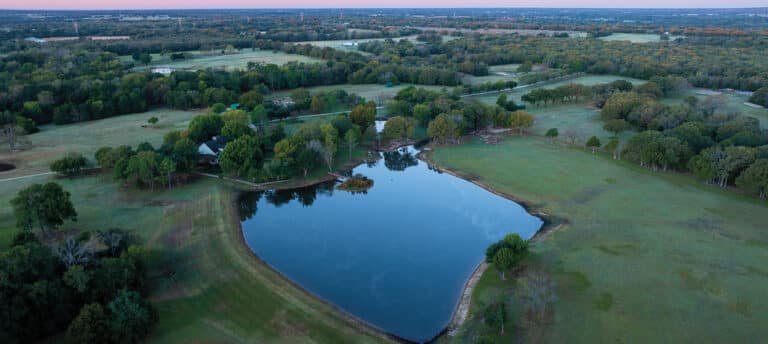By Glenye Cain Oakford | Photos by Anne M. Eberhardt, Blood-Horse magazine
This is a season of regeneration at Calumet Farm, Lexington’s sprawling 91-year-old Thoroughbred nursery. In the three years since billionaire landowner Brad Kelley’s Calumet Investment Group paid $35.9 million for the operation, Kelley has pumped money—and horses—into restoring a property many consider the crown jewel of the Bluegrass. Mares and foals dot the wide pastures again, there are eight residents in the red-trimmed stallion barn, and Calumet runners circle the training track every morning before cooling out in shedrows that were once home to greats such as Citation and Whirlaway. The extraordinarily reclusive Kelley has revealed little about his plans for this most public of Thoroughbred properties. But one goal is clear: to breed Triple Crown runners and, hopefully, winners.
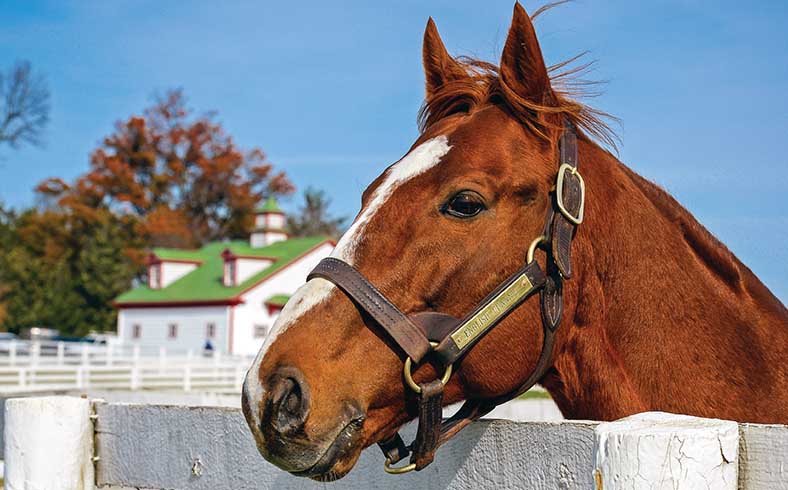 Calumet is currently home to about 265 broodmares and their foals. Their owner, a native of Franklin, Ky., is the fourth-largest private landowner by acres in the U.S., an avid conservationist who owns several preserves dedicated to the breeding of rare exotic animals. Most of his Thoroughbreds are destined for the Calumet racing stable rather than the auction ring.
Calumet is currently home to about 265 broodmares and their foals. Their owner, a native of Franklin, Ky., is the fourth-largest private landowner by acres in the U.S., an avid conservationist who owns several preserves dedicated to the breeding of rare exotic animals. Most of his Thoroughbreds are destined for the Calumet racing stable rather than the auction ring.
“It’s kind of a lost art now, farms that will develop families and have homebreds that are the core of their racing stock,” stallion director Ken Wilkins said.
Calumet will breed commercially, however, as well as to race. “We believe the two are compatible, notwithstanding the fact that the market can be somewhat preoccupied with fads, first-year stallions, and precocious speed horses,” said general manager Eddie Kane.
Still, Kane said, “Mr. Kelley wants to raise a racehorse. He gets a bigger thrill out of a good racehorse than a good sale horse.”
One thing hasn’t changed: Calumet’s iconic fences. Some 35 miles of fencing received a fresh coat last fall, even though a 55-gallon drum of white acrylic costs more than $600, about five times the cost of the more typically used black paint.
Hopes are high for this year’s first foals by Oxbow, who became Calumet’s record eighth Preakness Stakes (gr. I) winner in 2013. “We believe sound horses with serious pedigrees that perform in the classics will always be the mainstay,” Kane said.
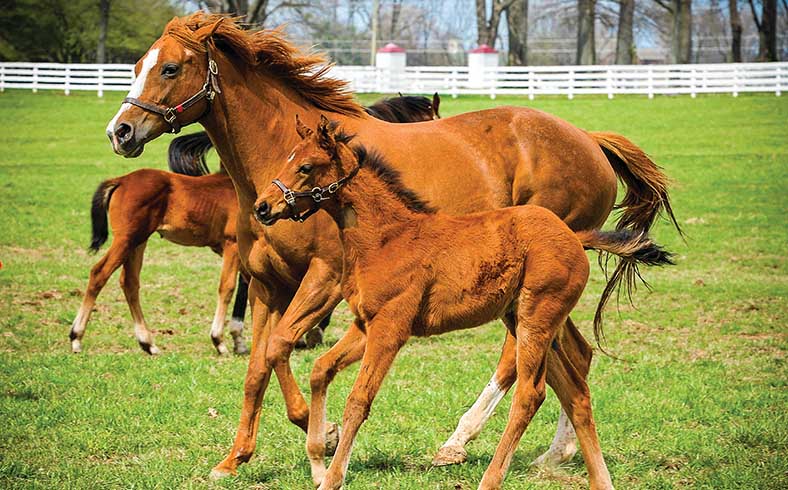
At Calumet’s horse cemetery, a monument to the farm’s eight Kentucky Derby winners reminds of the “old” Calumet’s unmatched dominance in America’s classics. Calumet also bred a ninth Derby winner, Strike the Gold, campaigned by owner William J. Condren in 1990-93. This year the farm fielded the largest draft of Triple Crown nominees for the season, with 15 horses eligible for the classics. “It’s a great challenge and, really, a great responsibility for us to try to add a good chapter to a history that will probably go on beyond us,” Wilkins said.
Warren Wright, Sr., son of Calumet founder William Monroe Wright, transformed the farm from famed Standardbred nursery launched in 1924 to Thoroughbred powerhouse starting in 1932—and had two Triple Crown winners, Whirlaway in 1941 and Citation (racing’s first equine millionaire) in 1948.
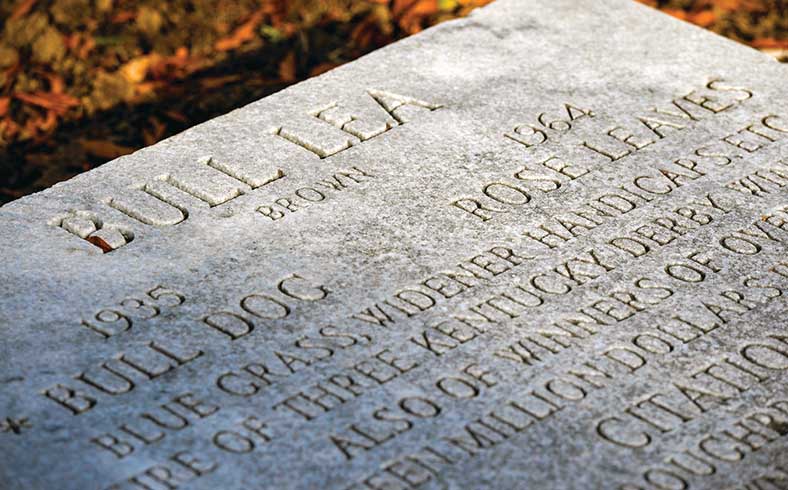
The father-and-son training team of Ben and Jimmy Jones credited Calumet foundation sire Bull Lea with giving them powerful classic ammunition during Calumet’s domination from the 1940s to the 1960s. The sire’s big guns included 1957 Derby winner Iron Liege, Triple Crown winner Citation, and 1952 Derby winner Hill Gail for Calumet, as well as 1947 Preakness winner Faultless. Bull Lea also was the broodmare sire of 1958 Derby and Preakness winner Tim Tam.
Calumet’s last great Triple Crown hope was Alydar, raced by Warren Wright’s widow Lucille and her second husband, Admiral Gene Markey. Trained by John Veitch, Alydar finished second to Affirmed in each Triple Crown race, by ever-smaller margins. Tragically, after Alydar’s untimely death in 1990, Calumet plunged into bankruptcy.
Oxbow is the first Preakness winner to stand at stud at Calumet since Forward Pass, who won both the Kentucky Derby and Preakness in 1968. The son of Awesome Again was an astute purchase by Bluegrass Hall, also under Kelley’s ownership, for $250,000 at the 2011 Keeneland September yearling auction.
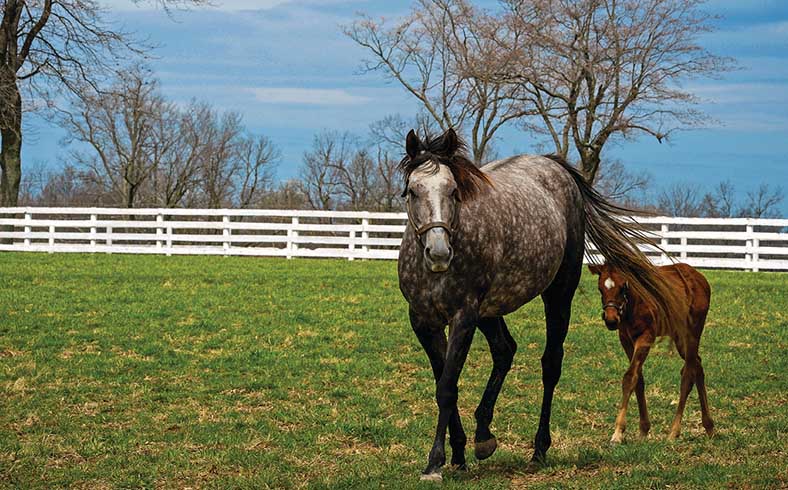
Calumet runners now carry Brad Kelley’s black silks with gold chevrons. The farm’s original silks—devil’s red with a blue collar, two blue hoops on the sleeves, and a blue cap—sold at the farm’s 1992 bankruptcy auction, where they brought $12,000 from Goncalo Torrealba shortly before Henryk de Kwiatkowski bid $17 million for the farm and $210,000 for the Calumet Farm name.
“We want to have our success on the track feed into having a nice, viable, commercial stallion division,” said Wilkins. “Hopefully, that will be a very strong tool for us.”
Farm trainer Joe Fernandez has been in residence since 1998. After Kelley took over Calumet, the training division’s population has gone from just two horses to nearly 50 in two barns. “I love taking the 2-year-olds and watching them develop,” Fernandez remarked. “It’s like watching a flower grow, and then they bloom.”
Calumet’s training barns are virtually unchanged since their construction in the 1930s and sport shedrows wide enough to allow single-file galloping indoors during foul weather.
Calumet advertises 15 stallions, of which eight—including flagship stallion English Channel and new sire Oxbow—are at the Kentucky farm. Others ply their trade in Ireland, Canada, Florida, Arkansas, Indiana, and Ohio.
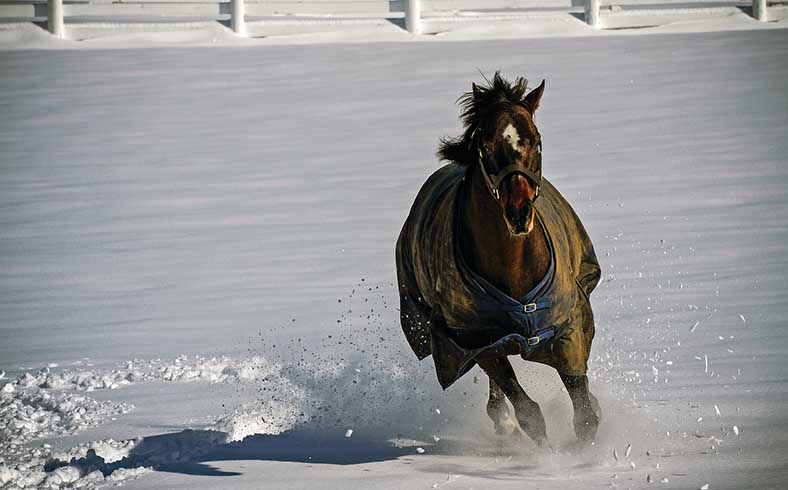 Calumet’s classic focus is reflected in the pedigrees and records of Calumet stallions such as Point Given. By 1995 Derby and Belmont Stakes (gr. I) winner Thunder Gulch, Point Given also became a dual classic winner by taking the 2001 Preakness and Belmont.
Calumet’s classic focus is reflected in the pedigrees and records of Calumet stallions such as Point Given. By 1995 Derby and Belmont Stakes (gr. I) winner Thunder Gulch, Point Given also became a dual classic winner by taking the 2001 Preakness and Belmont.
Bull Lea, a 1936 yearling purchase by Warren Wright, Sr., remains Calumet’s gold standard for a Thoroughbred stallion. Between 1940 and ’64 he was the leading general sire five times and top broodmare sire four times. He sired seven Hall of Fame runners—including the great Citation and Twilight Tear, the first official filly Horse of the Year.
English Channel, Calumet’s most expensive stallion this year at $25,000, sired last year’s Travers Stakes (gr. I) winner V. E. Day and recent $3.05 million CECF Singapore Cup (Sin-I) winner Parranda.
New sire Oxbow bred 110 mares in 2014 for his first year at stud and stands for $17,500 this season. The Awesome Again horse is by a Breeders’ Cup Classic (gr. I) winner and out of Tizamazing, a full sister to two-time Classic winner Tiznow.
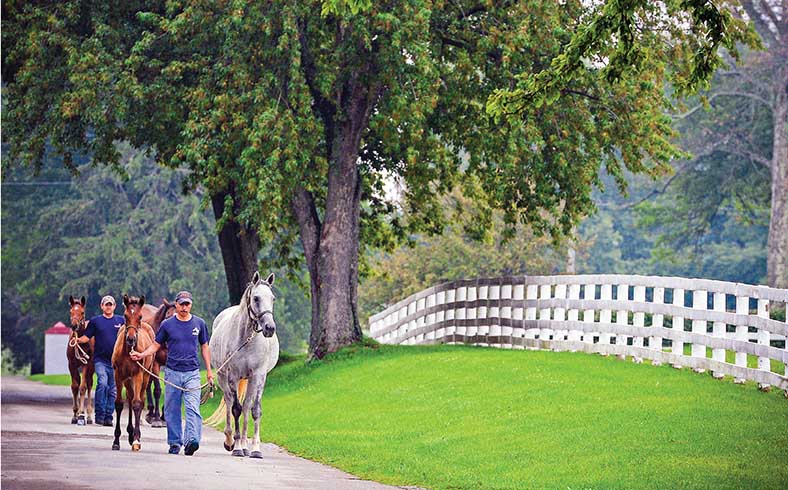
Calumet doesn’t just breed its own future stallions and broodmares. The farm also buys classic bloodlines. At last year’s Keeneland September auction, Kelley ponied up $525,000 for this son of Tiznow, a half brother to 2010 Kentucky Derby Presented by Yum! Brands (gr. I) winner and promising young sire Super Saver.
Stallions holding court at Calumet today will fuel the farm’s racing program and future breeding operations—with the hope of producing the next breed-shaping sire or broodmare that will return the farm to its former glory.
Behind every successful stallion is a book of good mares—and Calumet is supporting its stallions heavily with its own large broodmare band.
To reproduce its historic legacy, Calumet also must develop wellspring female families, such as the one that produced Alydar and his champion half sister Our Mims.
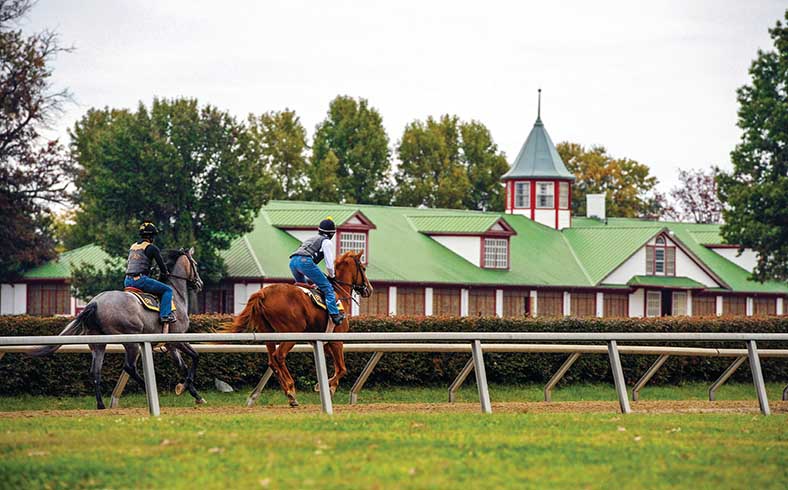
Warren Wright, Sr.’s astute purchases in the 1930s—like that of broodmare Dustwhirl and an interest in the stallion Blenheim II, both from Claiborne’s A. B. Hancock—laid the foundation for Calumet’s later dominance. Mated to Blenheim II, Dustwhirl produced Calumet’s first Triple Crown winner, Whirlaway, in 1938.
“What we’re trying to do here is go back to yesteryear and raise a good horse,” said general manager Eddie Kane. “Not raise a good sale horse, but raise a good, sturdy, two-turn Derby horse.”
“Calumet is somewhat of a landmark in the region and has played an important role in the history of the Thoroughbred industry, and we respect this,” Kane added. “It is now our challenge to continue and further contribute to that legacy. But, at the end of the day, it is a farm and a business like any other.”
“You’re always going to be compared to what they used to do, but you always try to write your own book,” Kane remarked. “Hopefully, we do.”


